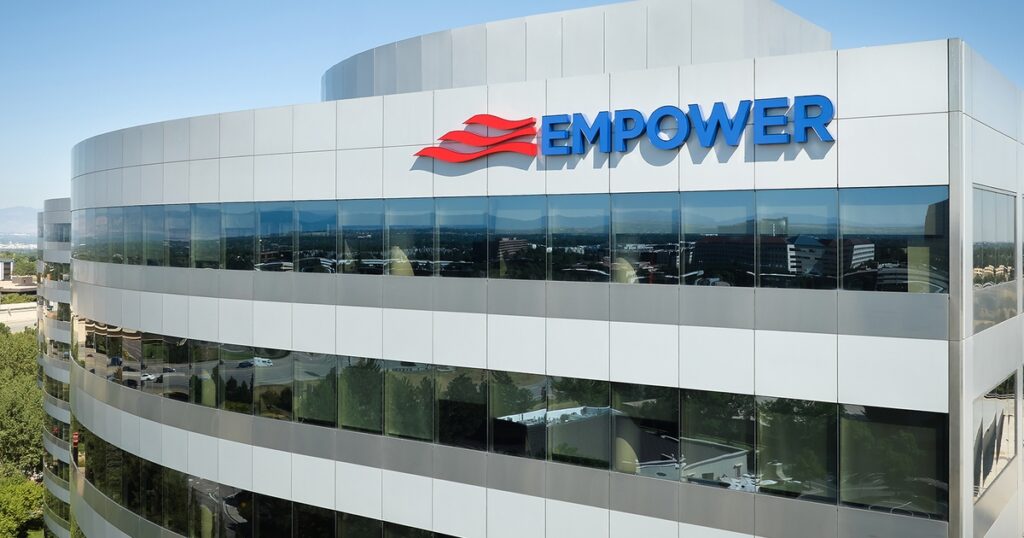Over the past two decades, the 401(k) industry has been unbundling. In the “Golden Age” of 401(k) plans during the 1990s, Fidelity, as a bundled record keeper, was the clear leader offering only proprietary mutual funds, selling directly—they controlled everything. The unbundling began as mutual fund companies like American Funds, Putnam and MFS entered selling through advisors and also only offering proprietary investments. Insurance companies like Nationwide, Principal, Voya (formerly ING/Aetna) and Manulife (John Hancock) followed by partnering with advisors and TPAs using outside funds, getting revenue through an annuity wrapper.
Other than fund companies with robust businesses like Fidelity, Vanguard, T Rowe Price and American Funds, most asset managers exited the 401(k) industry and chose to become DCIOs.
Brokers and dealers offloaded asset management and record keeping, with only Merrill left—the bank really wants to be in the business—and Chase/JP Morgan because they have a viable TDF. Others, like Morgan Stanley, Wells Fargo, UBS, MassMutual, NY Life and Ameriprise (American Express), have divested.
Most of the small market record keepers, most recently Fidelity, work with TPAs deploying an unbundled format to offload costs and staff to local firms, which can support and customize plans for smaller businesses.
Is the DC world re-bundling as consolidation continues steadily, while the race to sell wealth services to participants heats up, just as new plan formation explodes, and more participants use professionally managed investments like TDFs?
Empower CEO Ed Murphy recently proclaimed that they are “interested in eventually acquiring a national RIA.” After the first RPA Aggregator Roundtable in 2018, Murphy asked why he should not be looking to buy a firm like Captrust. It seemed counterintuitive at the time.
With $100 billion in the former Personal Capital division, which Empower bought for $1 billion, growing at 25% annually with 1,000 advisors, Murphy said an acquisition of a national RIA firm could further allow it to leverage its 19 million participants. With DCIOs and now private equity firms paying millions for placement while actively pushing participants into their managed accounts, Empower would have a practical bundled enterprise owning the platform and therefore user experience, selling wealth to participants directly and getting paid for asset management even if indirectly.
As Mark Twain once quipped, “History doesn’t repeat itself, but it often rhymes.”
How would RPAs react if Empower bought a national RIA firm?
Maybe no worse than current concerns by advisors that bring Empower plans and want to mine participants themselves—they face the same issues with other record keepers like Fidelity, Schwab and Vanguard.
Murphy stated that Empower has the muscle, discipline and balance sheet to make an RIA acquisition work within their ecosystem. Not many RPAs or aggregators have the resources, technology and access to data to leverage the convergence of wealth and retirement at the workplace, with the current exceptions of Captrust, Creative Planning and Morgan Stanley, which has led Aquiline to sell Sageview at a discount recently. Others like Hub and OneDigital are trying, while smaller, more nimble firms like Prime Capital and regionals are succeeding.
Some record keepers, like Ascensus, are trying to build capabilities and technology to enable advisors to leverage the convergence signified in part by Josh Rundle’s recent hiring.
So, while TPAs are still relevant as is the unbundled model, they are not growing as fast as the two bundled payrolls or the fintechs that mostly rely on payroll leads (See Gusto acquires Guideline), offering smaller plans what they really want—simplicity.
Though most broker/dealers are not looking to buy a record keeper apart from Raymond James, which bought NWPS, some like Morgan Stanley and JPMorgan Chase are private-labeling solutions like Vestwell, with others likely to follow to get more control of the entire ecosystem.
Asset managers without a viable TDF, which is garnering close to 70% of new contributions, are looking to bundle the few TDFs like FlexPATH that are not proprietary or within managed accounts. That’s bundling.
Face it—when a firm controls the platform, user experience, access to data, investment lineup and distribution and has the capability to engage and sell to participants in plans they manage, getting paid on assets, life is beautiful—just look at Fidelity in the 1990s when they built the industry’s most powerful provider. It’s not a coincidence that many senior executives like Murphy with Empower started at Fidelity.
The world is changing faster than most entrenched incumbents are comfortable with, but sometimes dangerous ideas like a record keeper buying an advisory firm might be the most impactful or important. Blaming Empower for going after participants in the plans they record keep, enabling their current 1000 advisors and possibly a national RIA, is like blaming the player, not the game.
Bundling is back, baby!

